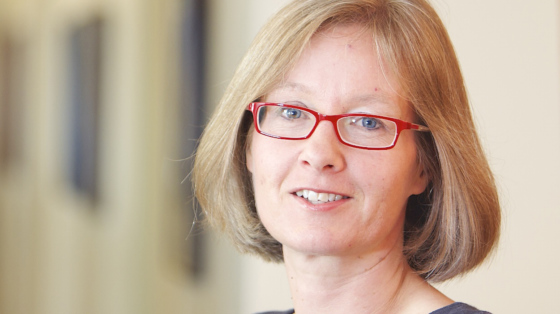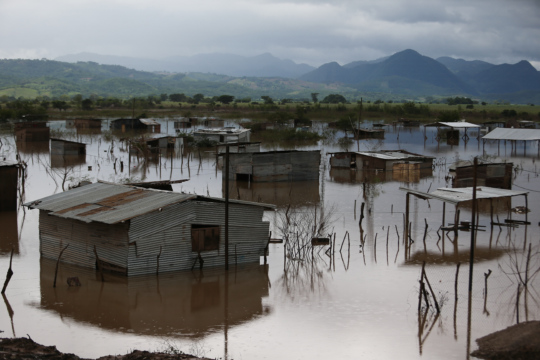An interview with Andrés Mogro, regional manager of the Climate Action Programme in Fundación AVINA.
The 27th Conference of the Parties to the United Nations Framework Convention on Climate Change (COP27) will be held in Sharm El-Sheikh, Egypt from November 6-18, 2022. The world’s premier climate negotiations will bring together over 30,000 participants, including heads of state, ministers, mayors, negotiators, journalists, civil society, and private sector representatives. While the official purpose of the event is to review progress made since COP26 in Glasgow and outline updated country-level climate commitments, certain themes with relevance for the global south such as climate finance and loss and damage have emerged as defining topics of the conference.
Countries in Latin America and the Caribbean (LAC) face similar adaptation financing challenges, which appears to be increasingly propelling the region to collaborate around COP. Historically, LAC negotiated at climate talks via different groups. This year, calls for climate finance and adaptation assistance, as well as an incoming wave of leftist presidents in leading economies in South America, have brought LAC together at COP27, with some even calling for a joint bloc for negotiation purposes. The Community of Latin American and Caribbean States (CELAC), a bloc including all Latin American and Caribbean countries, issued a joint declaration at COP27 calling for increased financial support from developed countries, sovereign bonds, debt swaps, and most importantly, regional climate coordination.
To learn more about LAC’s increasing regionalization, subnational action, climate finance, and other salient issues at COP27, the Energy, Climate Change, & Extractive Industries Program at the Inter-American Dialogue spoke to Andrés Mogro, Regional Manager of the Climate Action Programme in Fundación AVINA.
COMMENTS FROM ANDRÉS MORGRO
Question (Q): Traditionally, LAC does not act as a region at COPs. Is there an opportunity for regional interests to align at this year’s COP? If not, how can national governments exchange knowledge regarding best practices for adaptation and resilience?
Answer (A): It is true that LAC does not act as a region at COPs, but that is also true of every other region in the world aside from Africa. It remains unclear whether incoming left-leaning governments will bring new perspectives regarding regionalism. Regardless, Latin American countries face very similar climate impacts, so regional projects are an opportunity to collaboratively tackle these common challenges.
Despite Latin America’s fragmented positions at COPs, countries do collaborate with one another to share climate knowledge through networks like Euroclima+ and NDC Partnership. On a more regionalized level, Resilient Andes (Andes Resilientes), a project Fundación AVINA implements with Helvetas Swiss Intercooperation focusing on familial agriculture and adaptation in Ecuador, Bolivia, and Peru, brings together together representatives of diverse sectors—regardless of country relationships to COPs—to discuss how to improve resilience.
Q: Over 80 percent of climate finance is aimed at mitigation and reaches only national levels. How can Latin American leaders make increasing adaptation finance a priority at COP27 discussions, and how can international finance become more accessible for smaller projects in remote communities?
A: Latin America has made it clear that it prioritizes adaptation over mitigation and that its needs are local in nature, but climate financing continues to be primarily channeled toward national mitigation. Nevertheless, the region as a whole does not advocate for increasing the ratio of adaptation to mitigation funding at a political level as much as it should.
Financing of smaller, more local projects has been stymied byseveral barriers. At an international level, funding allocation depends on an organization’s project requirements. The Green Climate Fund (GCF) for instance, rarely finances a project that is smaller than $10 million, and for a local community, that amount is beyond their capacity to administer, implement, or monitor, as local needs tend to be smaller in scale. Thus, increasing financial access for local communities requires funding sources to adjust their administrative requirements to fit local capacities and their access to information. Overall, international funds like the GFC are inaccessible for local stakeholders and focus on large programs that can only be brought to the table by organizations the size of United Nations agencies.
A second barrier at the international level is that many projects require costly preliminary studies to provide proof of “climate rationality,” which becomes a disincentive for local communities. Climate rationality refers to scientific studies and data proving that a proposed action constitutes a measurable response to a problem caused by climate change. In practice, this is unnecessary because the Intergovernmental Panel on Climate Change (IPCC) already publishes detailed information on the impacts of climate change per region and the types of actions needed to combat them, but most funds demand a case-by-case argument, and it is their role to contest that argument. Given resource disparities for local communities, this often becomes a prohibitive requirement deterring proposals for projects addressing local needs.
Finally, access to finance for local communities also depends on the support of national governments, which tend to prioritize projects with a better opportunity of being approved by international funds or that will attract investment.
Q: How has the international community’s failure to deliver the promised $100 billion in climate finance affected Latin America? Will the developed world follow through on this promise? Does the $100 billion plan address the region’s needs?
A: Governments in the region need to bring to light not just the failure to deliver the $100 billion promised but also how the funding allocation fails to meet the region’s needs. The commitment says that these $100 billion will be mobilized for developing countries, taking their needs and priorities into account. However, most financing flows towards mitigation, and most of it is offered in the form of loans, not grants. This has forced developing countries to acquire debt to reduce emissions, even if their main need has been grants to finance adaptation. This primarily owes to the fact that mitigation projects can generate returns on investment (such as through electric cars or solar panels). In contrast, adaptation funding will almost never generate returns. Thus, much of the climate finance we are seeing is motivated by generation of revenue instead of consideration of developing countries’ most urgent needs.
Not only have developed countries failed to fulfill the promise, but now they are shifting the responsibility of their commitments to the private sector. This can be seen, for example, in forcing developing countries to become “more attractive” to investment; otherwise, they are to “blame” for the fact that they have not received climate financing (in loans, because grants are rare). Developed countries have refused to agree on replenishment values for the Green Climate Fund or the Adaptation Fund, have refused to define what climate finance is, have insisted on reporting non-concessional loans (granted under less generous terms compared to concessional loans and clearly motivated by revenue), and have turned a blind eye to loss and damage finance needs by designating it as a humanitarian aid issue, not a climate finance issue.
Q: How can different Latin American countries integrate Indigenous and local and community-based voices to identify climate priorities, design commitments, and delineate future updates of their Nationally Determined Contributions (NDCs) and National Adaptation Plans (NAPs)? How can these organizations’ capacities be strengthened while building governments’ institutional capacity to integrate their knowledge and feedback?
A: Feedback from local organizations is invaluable for governments, since local stakeholders know their unmet needs and the actions that will directly affect their territories or constituencies. Integration of Indigenous and local knowledge depends upon two factors. The first is the level of openness of governments to include local and community-based voices in climate planning. Oftentimes increased openness results from pressure from the media and organized social movements. The second factor is thus the level of coordination among these local stakeholders to exert that pressure.
To that end, local actors should work to create a shared agenda and solidify links among themselves. Creating governance mechanisms for a local network and increasing spaces for dialogue can enable these organizations to speak with a single voice. This could include, for example, organizing assemblies to determine an agenda, priorities, or demands, and identifying spokespersons to articulate them, including at a technical level.
After solidifying a shared agenda and building communal organization, these groups can advocate for their needs with the governmental body assigned to work with local or Indigenous voices. By creating fora to bring all these stakeholders to the table, they can build power to demand the government branch in charge of climate planning includes them in all stages of climate action.
On a final note, government functions and capacities in Latin America are often supported by international agencies dealing with issues related to gender, Indigenous peoples or human rights. National governments and local stakeholders can seek support from these organizations to create spaces for conversation and bring technical expertise.
Q: Digitalization and digital inclusion have gained relevance as enablers of resilience and adaptation. How can Latin America leverage this international forum to use information and communications technology to combat climate change?
A: Digitalization has aided in the fight against climate change by increasing access to essential information and facilitating interaction between local and international stakeholders. However, different categories of new technologies have different applications.
Most countries in Latin America have used tools related to digital inclusion and knowledge sharing to consult and involve local actors in climate policy development, implementation, and monitoring. The efficacy and impact of such technologies continue to improve. Given that COP discussions tend to be far from local realities, any effort to either bring those realities to those deliberations or bring results back to a local level can be much improved through today’s communication technologies.
In contrast, intellectual property rights restrict access to various tools related to climate mitigation, which is an additional obstacle for widespread technology adoption in developing countries. Given that many of these patents come from countries with higher historical emissions, monopolizing essential climate mitigation technologies and withholding them from the global south is an issue of climate justice. According to the Organisation for Economic Co-operation and Development, 36.7 percent of patents related to technologies aimed at clean energy generation are held in European Union countries, 20.2 percent in the United States and 19.8 percent in Japan. This disincentivizes research & development in the global south and prevents scaling up much-needed climate technologies.
Q: Going into this year’s COP, justice is at the forefront of debates and negotiations. Within that context, what lessons can we learn from under-represented communities? How can we amplify their voices before, during, and after COPs?
A: The knowledge these groups share has much to teach us; so, a first lesson to be learned is that any conversation with local stakeholders and communities must begin from a point of mutual respect and acknowledgment of diverse practices, beliefs, governance schemes, and traditional and ancestral knowledge. It is important to be aware that modern economic and political practices have brought the world to the current state of climate crisis, whereas local communities have played a crucial role in preservation of biodiversity and sustainable practices.
A second important lesson learned from these groups is that climate efforts can never have sustainability or scalability over time if they do not strengthen and empower the role of local stakeholders. Governments change; projects open and close. The processes and capacities needed to promote long-term collaborative action have the potential to remain at the local level.
Finally, it is important to realize that COP, regardless of its good intentions, is not a fully participatory process in which anyone who is interested in attending can do so. Being at COP requires considerable work and resources such as an organization to accredit one’s participation; in most cases, visa arrangements (especially for the global south); and funding for flights, accommodation, transport, and food. On top of high socioeconomic barriers, from a global south perspective, COP takes place in a foreign language and remains mostly led by heterosexual, middle aged, white men. Great efforts must be made on the side of all non-governmental and governmental organizations in the global south to guarantee that local voices can participate. This could be improved through allowing increased virtual participation, through the sharing of information pre and post COPs, or through processes to discuss developments at the international level and their national and local implications.
Q: Usually, we think of COPs as fora for national governments. How can cities and local jurisdictions become protagonists at these events, and what can they commit to in terms of assessing their level of dependence on ecosystem services or of delivering on urban sustainability and resilience?
A: It is true that the governmental side of COPs, which is to say, negotiations, are fora limited for national governments, who are attending in their capacities as ratifying parties to the UNFCCC or the Paris Agreement. However, a COP is also the largest meeting in all the UN system, and it is an opportunity for all stakeholders working around climate change to meet, discuss and agree on anything they see fit, taking advantage of the forum.
These summits have provided the opportunity to create all kinds of initiatives, like the Covenant of Mayors, Resilient Cities Network, and other spaces where cities may create links, exchange best practices, and communicate their climate commitments, which may lead to potential cooperation. Fundación AVINAS’s Resilience Hub, is another example of a regional initiative aimed at generating regional dialogues with local actors around priorities and lessons learned to further resilience.
In many cases, Latin American cities are independent from national governments in the ways in which they manage solid and liquid waste, provide clean water, determine which technologies to use in the provision of energy and public transport, and which criteria to use in public purchases, conservation standards, or resource preservation within their jurisdiction. All of these provide avenues to improve the use and preservation of ecosystem resources and to promote citizen climate empowerment. A COP may provide public spaces to announce these actions and plans, either through participation in events, panels, press conferences, high-level meetings, pavilions, exhibits, or networking. Cities’ representatives attending a COP should make use of all these opportunities in-situ and strategically assess their options in advance.






















